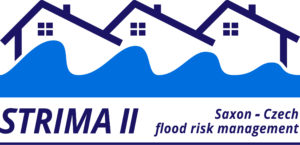Vulnerability to floods, nature-based measures and importance of small water bodies
A series of three studies and leaflets dedicated to different aspects of floods, solved by the project Saxon-Czech Flood Risk Management II, funded by the European Union via the European Regional Development Fund. For more information about STRIMA II, click zde.
Vulnerability
Globally, floods are among the most serious natural dangers, which is why we need to focus on reducing their impacts. However, that requires both detailed understanding of their different aspects and grasping their complex nature. Vulnerability belongs among the key terms in flood risk management. The degree of vulnerability is determined separately for the population and for different types of structures or activities, for example. Vulnerability is described in detail in the leaflet and the study.
Bibliographic reference: Raška, P. et al. (2018). Vulnerability to floods: Information material on flood vulnerability assessment for public administration and private entities (Zranitelnost povodněmi: Informační materiál k hodnocení zranitelnosti povodněmi pro veřejnou správu a soukromé subjekty). J. E. Purkyně University in Usti nad Labem
For download:
Information leaflet: What is flood vulnerability? Summary for public administratrion and private entities (English version)
Information leaflet: Wie ist Verletzbarkeit durch Hochwasser zu verstehen? (German version)
Nature-based flood protection measures
Nature-based flood protection measures are implemented in landscape, on watercourses or in human settlements and make use of green and blue infrastructure. In addition to these functions, they often provide many more benefits for ecosystems (such as soil protection from erosion). Measures implemented to protect from floods include polders, pools and baulks. Their function with regard to floods consists in capturing water in landscape, slowing down its progress and capturing torrential rains and resulting flood waves. The outcomes focus primarily on economic aspects (costs and benefits) and on ecosystem services provided.
Bibliographic reference: Macháč, J. et al. (2018). Classification and evaluation of nature-based flood protection measures in selected environmental public goods (Klasifikace a hodnocení přírodě blízkých protipovodňových opatření na vybraných veřejných statcích životního prostředí). J. E. Purkyně University in Usti nad Labem
For download:
Information leaflet: Nature-based flood protection solutions and their benefits (English version)
Information leaflet: Was versteht man unter naturnahen Hochwasserschutzmaßnahmen? (German version)
Small water bodies in landscape: their functions and barriers to their construction
Drought periods as well as torrential rains require a change in water source management. One possible strategy is to improve the ability to retain precipitation as close as possible to its place of impact, thus slowing water runoff from the catchment area. Solutions include establishment of small water bodies in landscape, specifically various types of pools, systems of pools and wetland ecosystems. The advantage is that some of them do not need to be permanently filled with water and they have no technical outflow controls, and they simultaneously perform a number of interconnected functions in the landscape. However, their implementation is associated with possible barriers, such as ownership relations in the area and insufficient funding sources. See the study and the leaflet for more information.
Bibliographic reference: Slavíková, L. et al. (2019). Small water bodies in landscape as a comprehensive tool for water retention in catchment areas: Institutional analysis results (Drobné vodní plochy v krajině jako komplexní nástroj k retenci vody v ploše povodí. Výsledky institucionální analýzy). J. E. Purkyně University in Usti nad Labem
For download:
Information leaflet: Small water bodies in landscape: their functions and barriers to their construction (English version)
Information leaflet: Kleinwasserflächen in der Landschaft: ihre Funktion und Hindernisse bei der Errichtung (German version)



